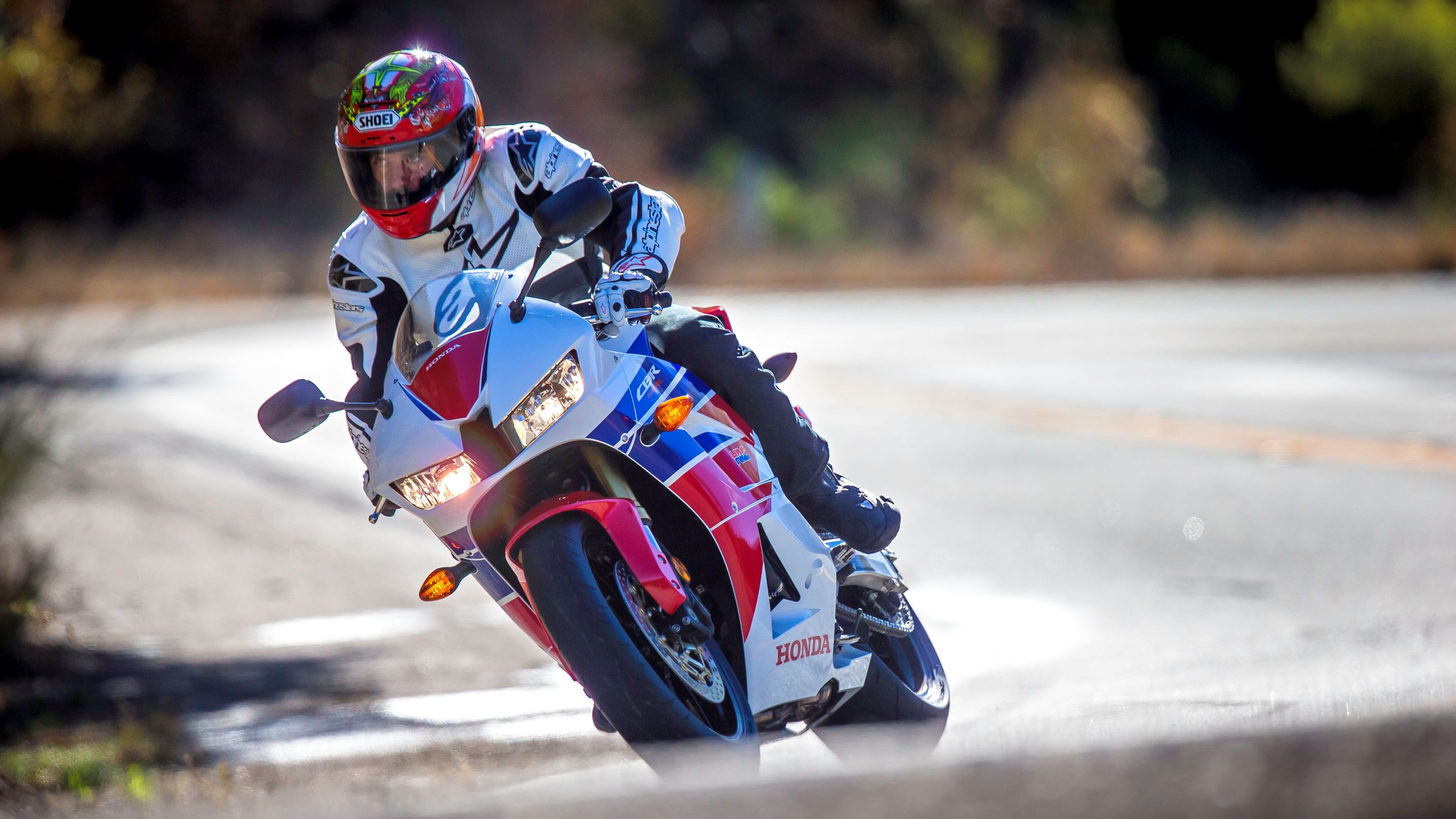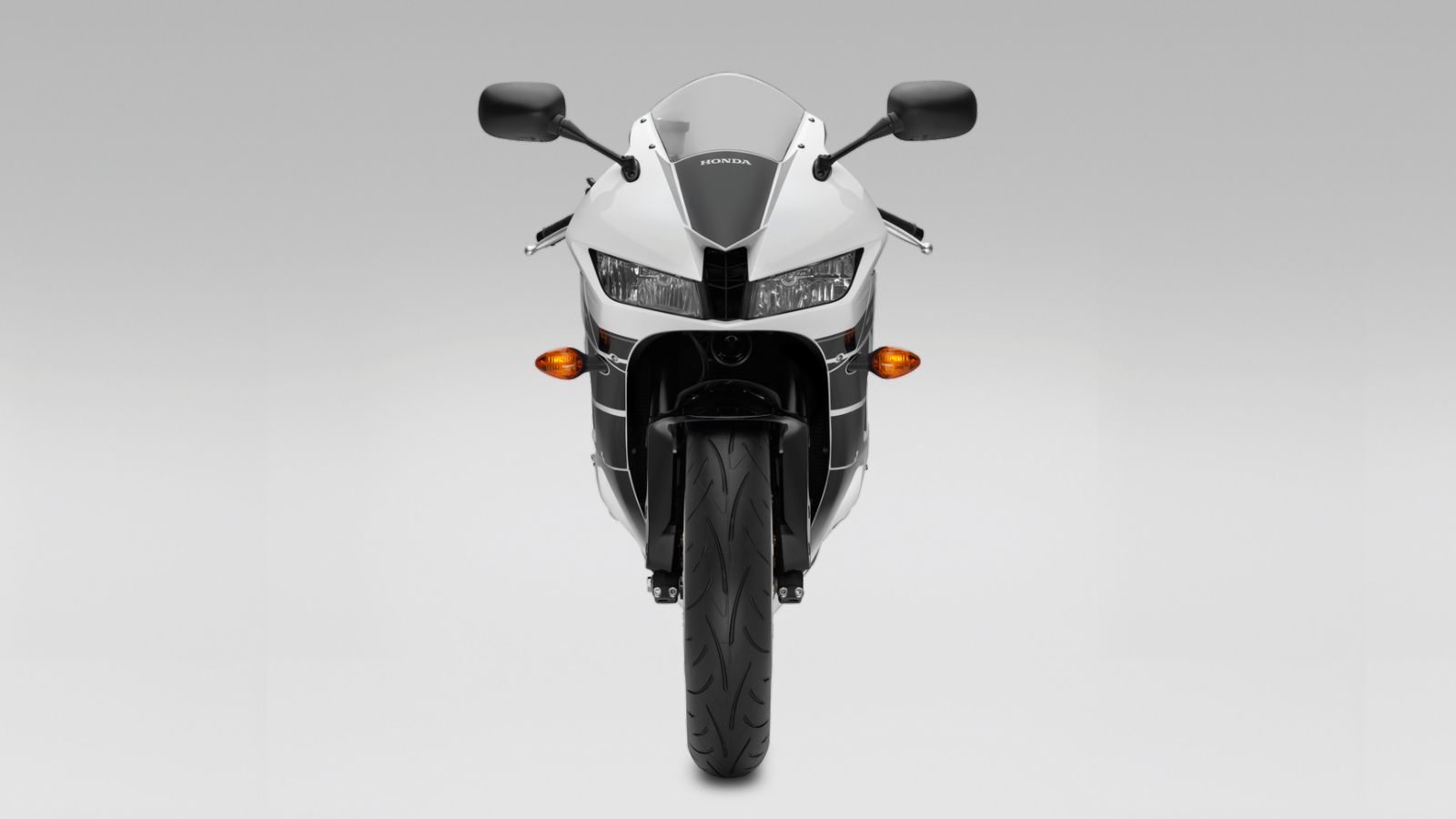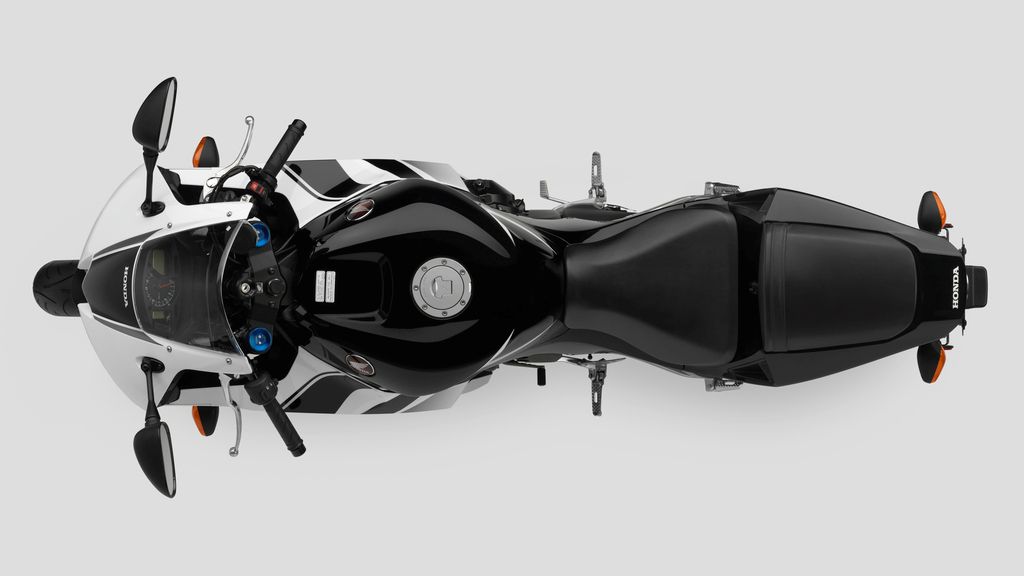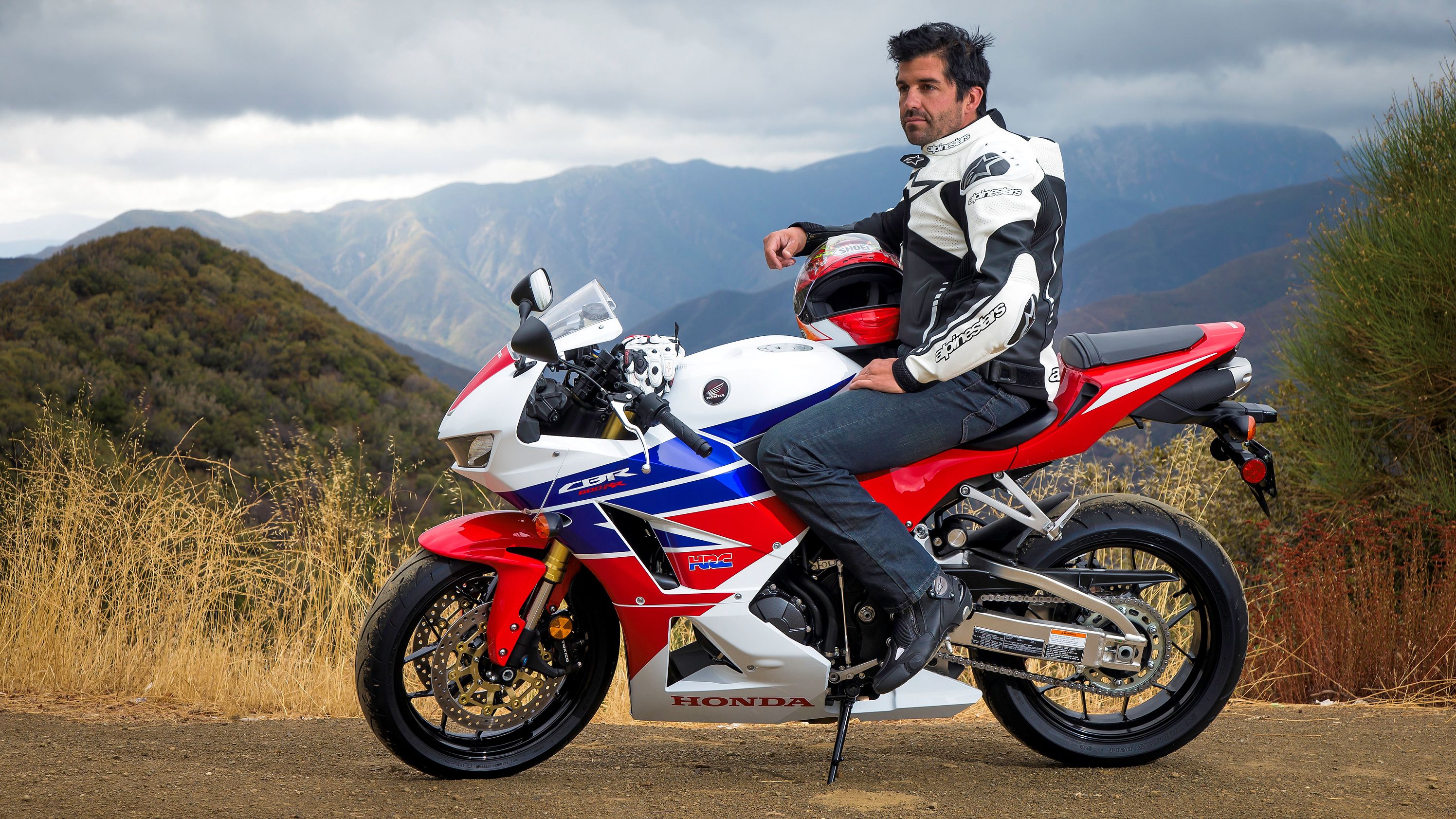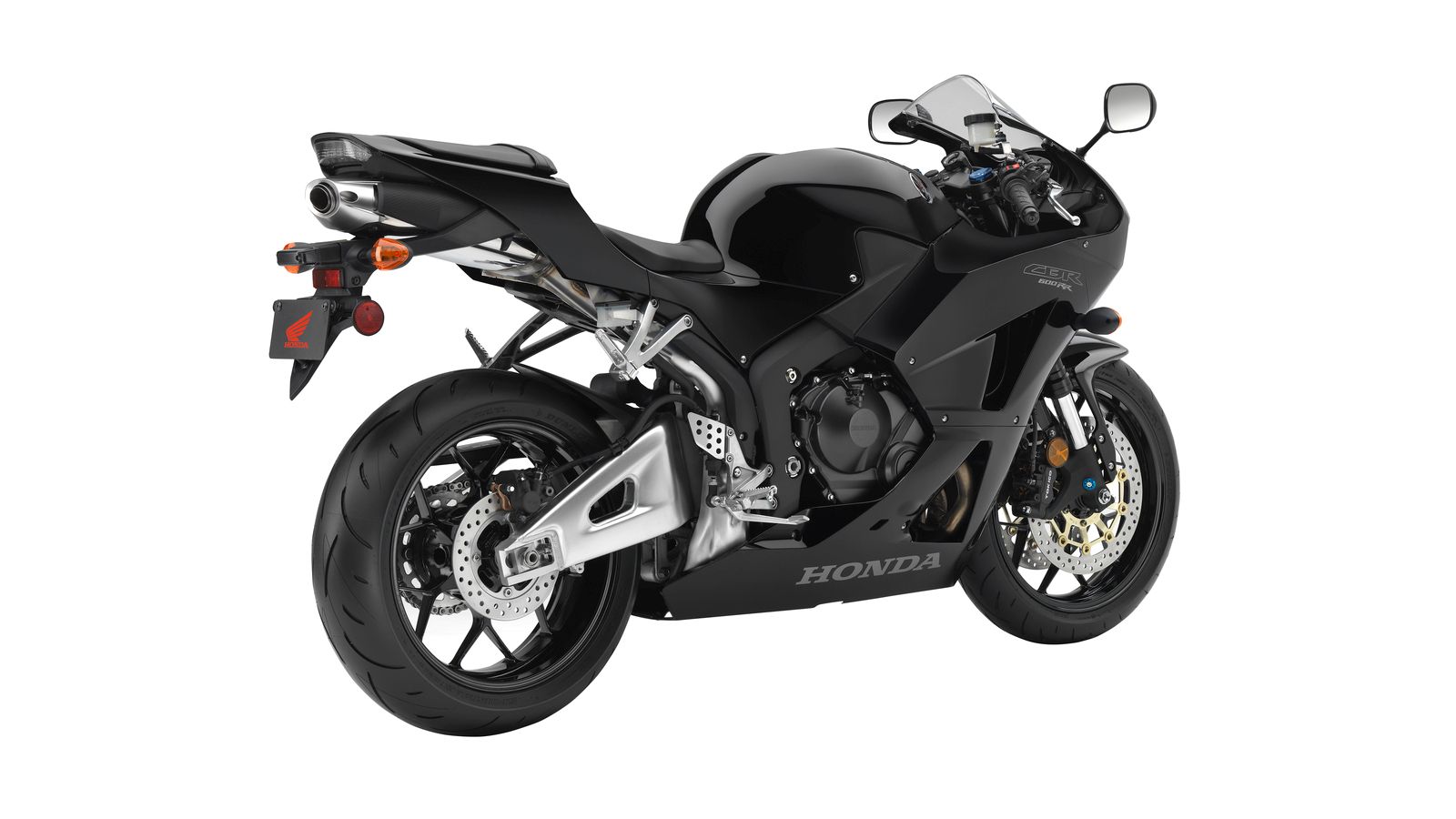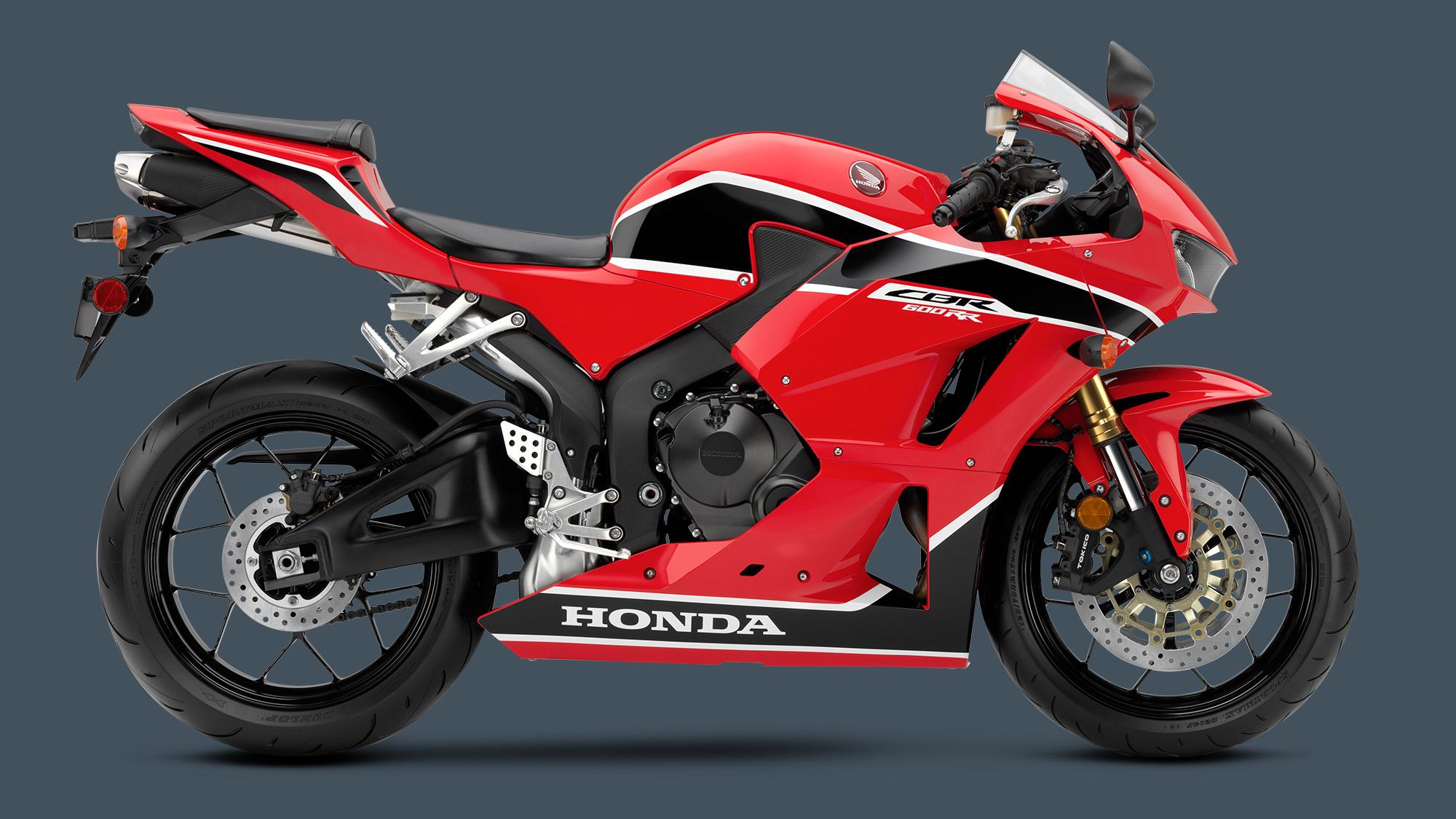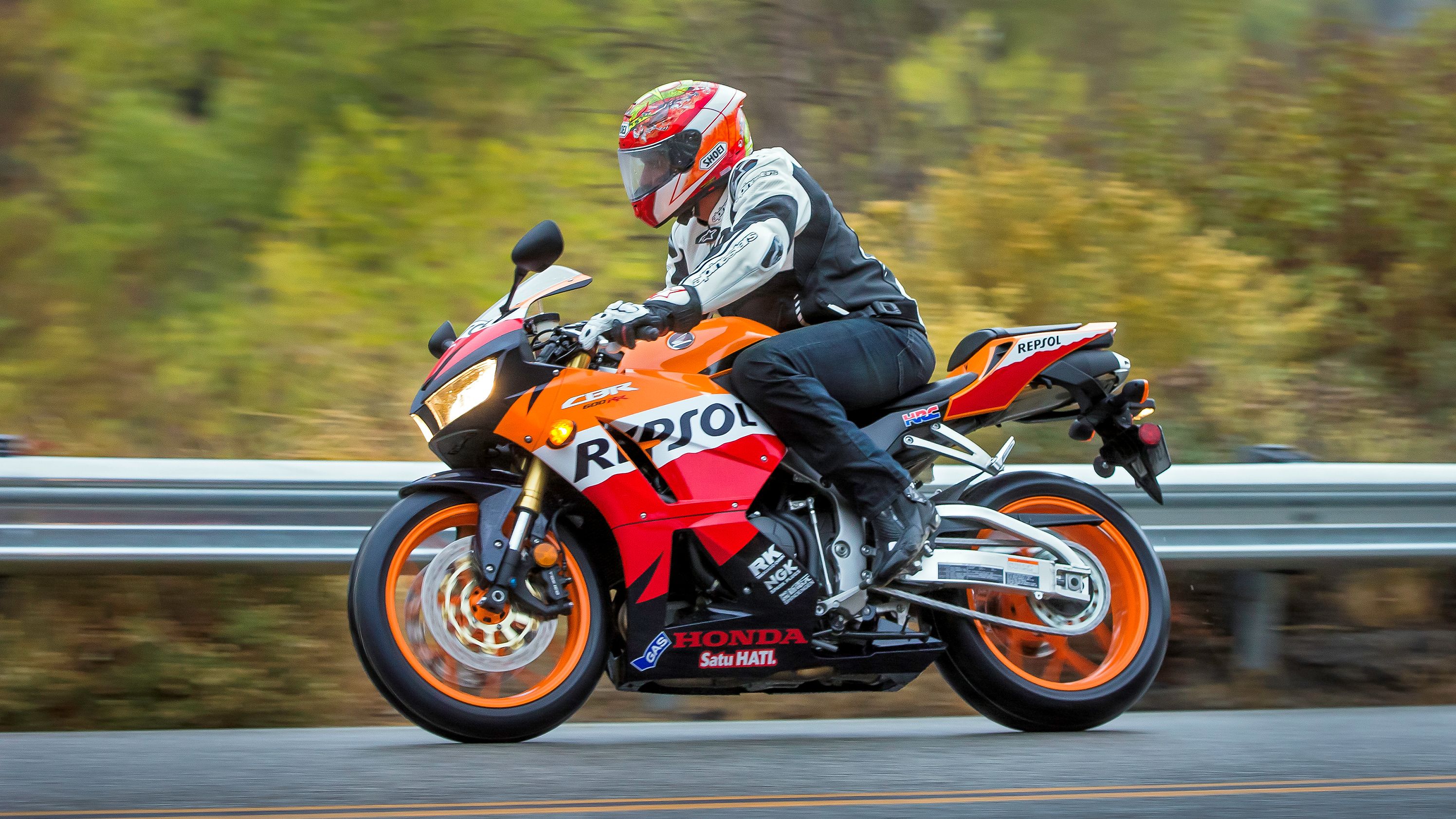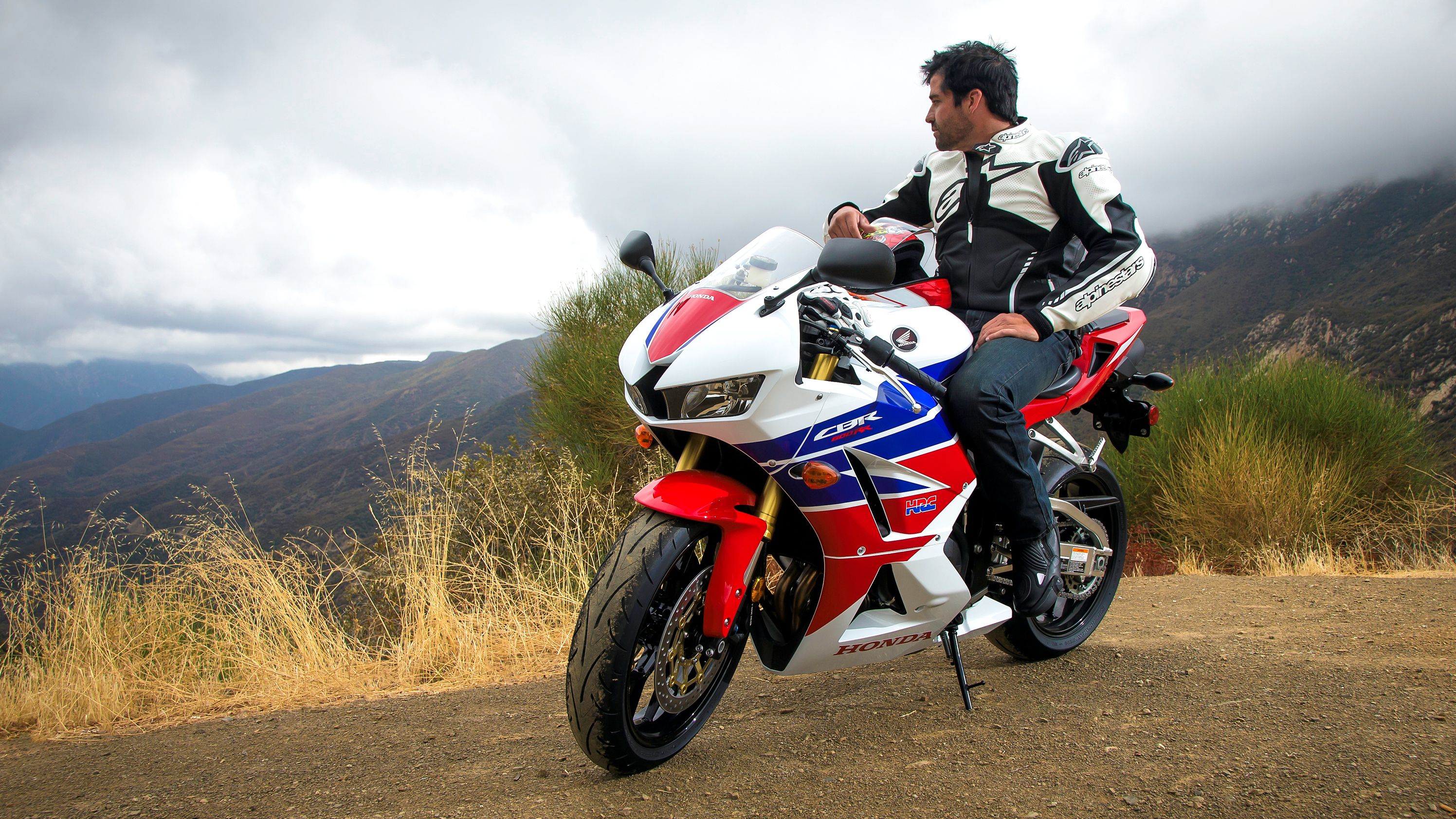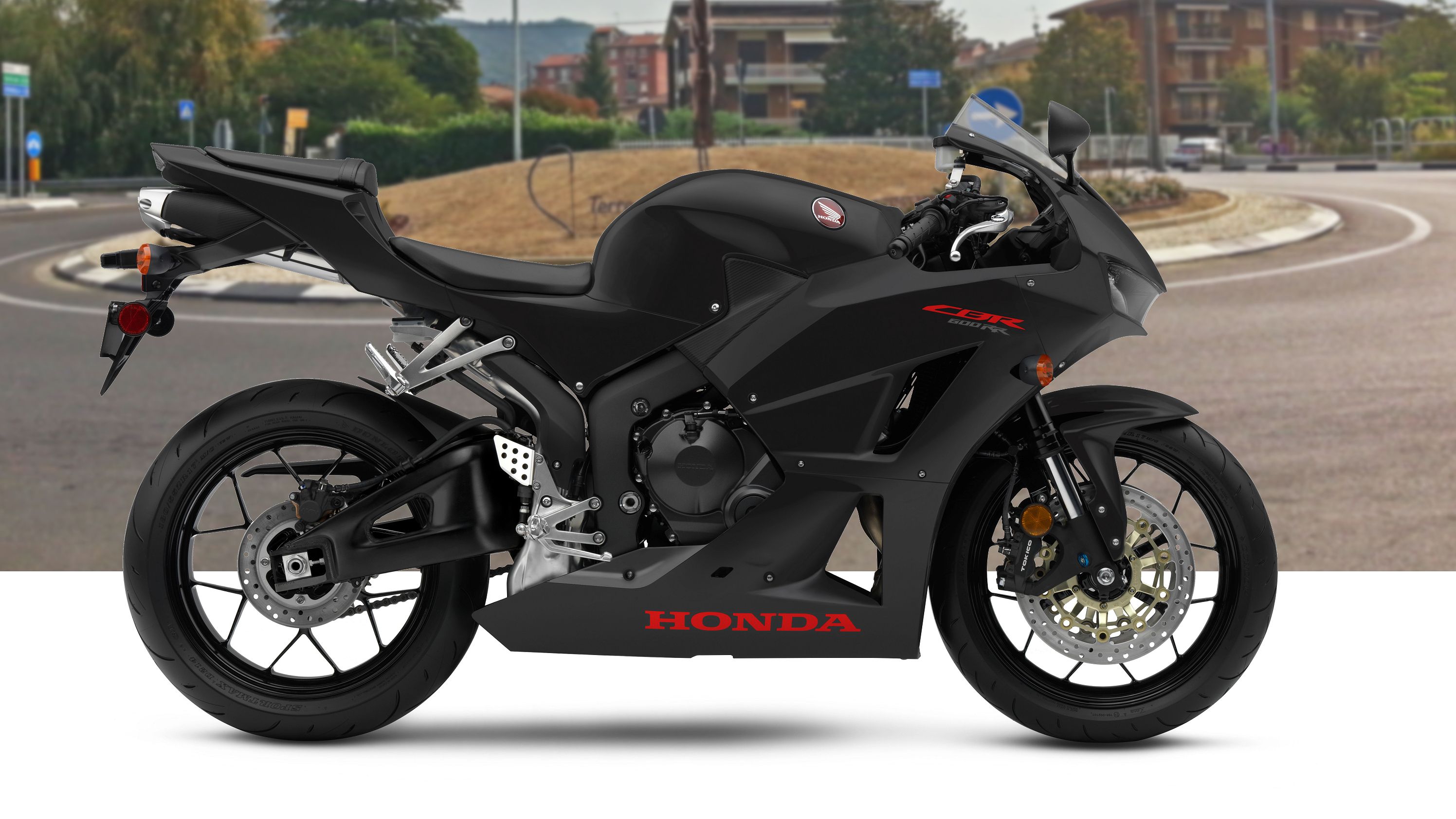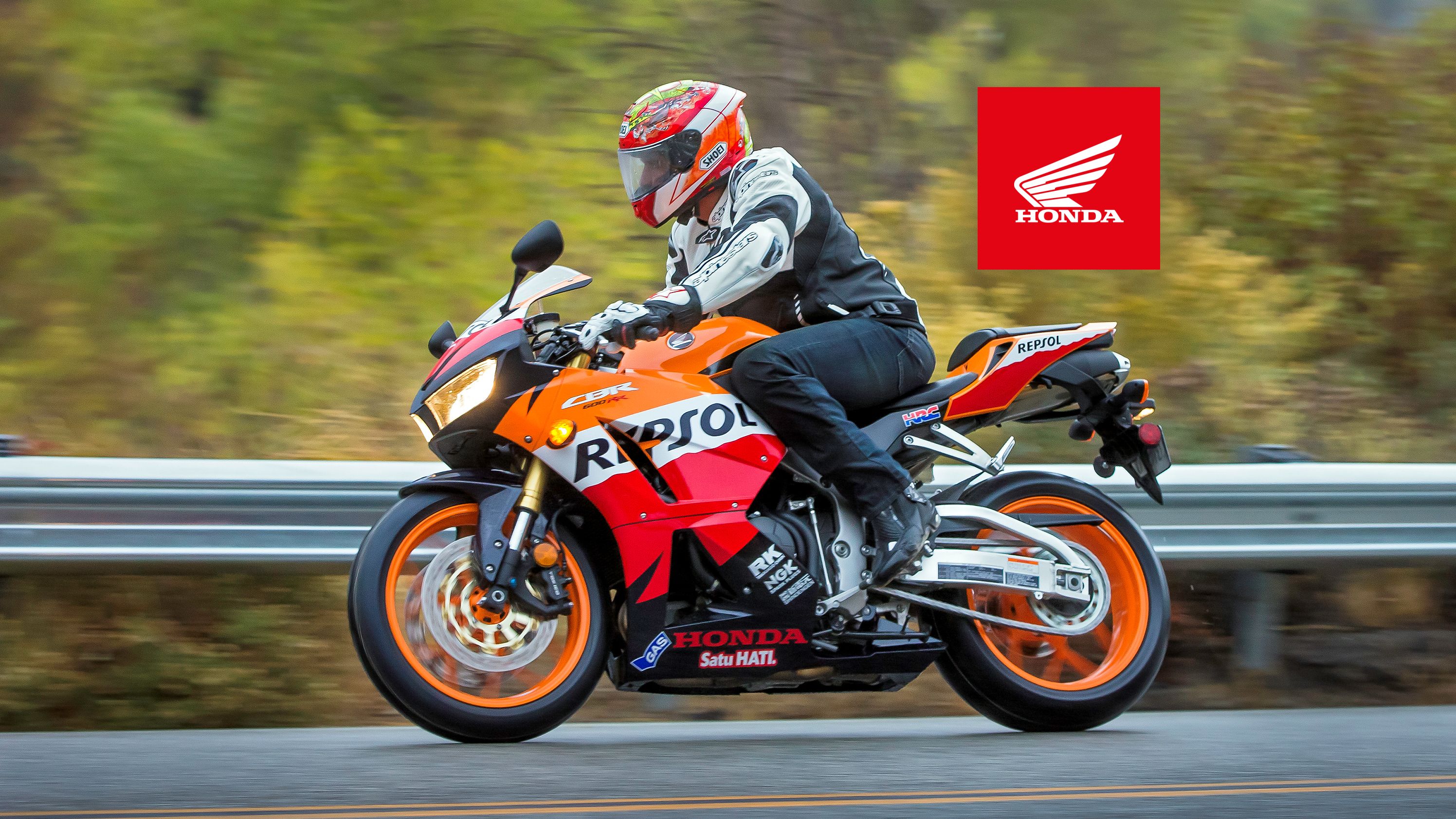Honda's latest generation of 600 cc CBR supersports toes the family line with its race-winning blend of power and maneuverability all packed onto a MotoGP-inspired chassis. Much like the original CBR600RR that hit the streets back in '03 and was built as a racebike replica, the current model features a strong engine along with a front suspension featuring Honda’s 41mm Big Piston Fork for superb handling and snappy action, plus MotoGP-inspired bodywork in a race-tested aerodynamic supersport design.
Honda CBR600RR Design
The current generation of CBR600RR essentially started out with a major overhaul in 2013 with few changes all the way through the 2016 model year as the race-replica market cools a bit in favor of more naked, streetfighter-type bikes. Folks who are still interested in the race-replica aspect will likely appreciate the similarities between the 600RR and the bike Michael van der Mark rode to capture Honda's 10th Manufacturer title in the Moto2 class in '15.
Function drives form with near-complete coverage by the windtunnel-tested body panels. Not only does the fairing provide good penetration, but it also forms an air scoop that takes advantage of the pressurized air at the front of the bike as a “poor man's turbo” of sorts. The work Honda put into the bodywork found its way down the range to the CBR500R, and up to the Race Team's RC213V MotoGP competition bike.
From the entry, the lines flow down across the fairing lowers that come vented for low-drag re-integration of the ram air back into the slipstream, as well as up and over the low-profile, bullet-shaped windscreen on back to the tapered, tail-high subframe. The factory kept the rear end clean and exhaust weight centralized by running the muffler under the P-pad area, which not only looks sexy, but it keeps those drag-inducing, power-robbing components tucked away where they can do no harm.
Bottom line on looks is that this is a fast bike that looks like a fast bike, so it may not have quite the curb appeal of some of its street-oriented competitors. The riders of its competitors will get very acquainted with how the 600RR looks from behind. As for the dimensions, the 600RR is rather compact with a 53.9-inch wheelbase and 32.3-inch seat height, with nothing in the way of excess fat, as evidenced by the 410-pound wet weight.
Honda CBR600RR Chassis
Honda starts out with an all-aluminum, twin-spar frame on the CBR600RRthat keeps things light and flexible in all the right ways, with an eye to the maneuverability necessary for quick flicks and reversals. The steering head comes set for 23.5 degrees of rake and 3.9 inches of trail for canyon-carving agility with Honda's own Electronic Steering Damper. The ESD adjusts itself automatically based on bike speed to help prevent tankslappers from shortening your ride, or at least scaring the crap out of you.
A set of 41 mm, Big Piston Forks buoy the front end and a Pro-Link monoshock supports the rear. Suspension at both ends -- with 4.3 inches of travel up front and 5.1 inches at the rear axle -- come with adjustable spring preload, as well as tune-able compression and rebound damping for complete control over the ride. Cast rims mount the 17-inch hoops that come in a 120/70 up front with a 180/55 in back.
A pair of radial-mount, four-pot, monoblock, opposed-piston calipers pinch dual, 310 mm front brake discs, and a single-pot, piston-and-anvil caliper binds the 220 mm rear disc. While the base model CBR600RR comes with straight-up traditional brakes, Honda's Combined ABS is available as an option.
Not only does the ABS function as you might expect in that it prevents loss of traction due to overbraking, but it also acts as a sort of proportioning valve that balances braking forces between the wheels, and sends a portion of the braking power from the rear brake lever up to the front brake calipers. Best of all, the feedback at the brake lever feels natural, with none of the pulsing or disconnected feeling in the lever, though the front brake lever seems a little slow to come on with a really long throw before the front brakes get a bite.
|
Front Suspension: |
41 mm inverted Big Piston Fork with spring preload, rebound and compression |
|
damping adjustability; 4.3 inches travel |
|
|
Rear Suspension: |
Unit Pro-Link® HMAS™ single shock with spring preload, rebound and compression damping adjustability; 5.1 inches travel |
|
Rake: |
23.5° (Caster Angle) |
|
Trail: |
97.7 mm (3.9 inches) |
|
Front Brake: |
Dual radial-mounted four-piston calipers with full-floating 310 mm discs |
|
Rear Brake: |
Single-caliper 220 mm disc |
|
Front Tire: |
120/70ZR-17 radial |
|
Rear Tire: |
180/55ZR-17 radial |
Honda CBR600RR Drivetrain
Honda powers the CBR600RR with a 599 cc, inline, four-banger mill that comes with chrome-plated, Palphos M1-A treated con-rods and wrist pins for low friction operation, a treatment that they subsequently passed on to the Africa Twin for a boost in the adventure lineup. Liquid cooling helps the 600RR mill meet emissions standards, and the water jacket serves to dampen noise emissions from within the motor.
The cylinder dimensions reveal a significantly oversquare engine with a 67 mm bore and 42.5 mm stroke, and as you might imagine, this produces more in the way of horsepower, and less in the torque department. Official power figures are kind of sketchy, and here's why: the bike must be up to speed to take full advantage of the pressurized air in front of the bike, and it doesn't develop full power until that happens. With that in mind, let's just call it something just north of 98 horsepower at 12,500 rpm, and 44 pound-feet of torque at 10 grand.
A quartet of 40 mm throttle bodies with Denso, 12-hole injectors feed the beast, and a 3-D mapped, electronic ignition system controls the spark. Dual, overhead cams time the four-valve heads, and the fairly hot, 12.2-to-1 compression ratio means no cheap or mid-grade gas is in this bike's future, only premium-price champagne. The lack of slipper-clutch technology is a bit surprising given the track-tastic capabilities of the 600RR, but that's nothing good riding technique can't overcome. A standard clutch feeds engine power through the close-ratio, six-speed transmission with an O-ring chain making the final connection to the rear wheel.
|
Engine: |
599 cc Liquid-Cooled Inline Four-Cylinder |
|
Bore x Stroke: |
67 mm x 42.5 mm |
|
Induction: |
Dual Stage Fuel Injection (DSFI) with 40 mm throttle bodies, Denso 12-hole injectors |
|
Ignition: |
Computer-controlled digital transistorized with 3-D mapping |
|
Compression Ratio: |
12.2:1 |
|
Valve Train: |
DOHC; four valves per cylinder |
|
Transmission: |
Close-ratio six-speed |
|
Final Drive: |
#525 O-ring chain |
Honda CBR600RR Pricing
The 2022 CBR600RR base model rolls for $11,999, and the ABS version fetches another grand at $12,999. Price hasn't changed much over the last couple of years, but then, neither has the bike.
|
Model Id: |
CBR600RR |
|
Warranty: |
One Year Transferable, unlimited-mileage limited warranty; extended coverage available with a Honda Protection Plan. |
|
Colors: |
|
|
└ 2016: |
Black/White |
|
└ 2017: |
Red/Black |
|
└ 2018: |
Grand Prix Red |
|
└ 2019, 2020: |
Matte Black Metallic |
|
└ 2021, 2022: |
Grand Prix Red Tricolor |
|
Price: |
|
|
└ 2016: |
$11,490 (ABS: $12,490) |
|
└ 2017 - 2020: |
$11,799 (ABS: $12,799) |
|
└ 2021: |
$11,899 (ABS: $12,899) |
|
└ 2022: |
$11,999 (ABS: $12,999) |
Honda CBR600RR Competitors
Rather than look to Italy or Europe for a competitor, I decided to go with one of Honda's longtime domestic foes, the Ninja ZX-6R ABS from Kawasaki.
Kawasaki Ninja ZX-6R
Looks-wise, both fall well within the race-replica genre with only minor differences in overall design. Neither manufacturer passes up the chance to take advantage of the pressure wave at the front of the bike and use the pressurized air to feed the intake, and so both fairings feature an intake at the leading edge to channel the air right on in.
Suspension is just about a wash with both bikes sporting beefy, 41 mm inverted forks and a rear monoshock, and both ends are adjustable for preload as well as compression and rebound damping. Dual, 310 mm front brakes are present across the board, and both manufacturers offer their proprietary anti-lock brake system, so brakes are a wash as well.
Kawi picks up some juice with its choice of powerplant for the Ninja. On paper, it looks the same as the Honda fare: a water-cooled, fuel-injected, inline-four cylinder, DOHC mill. The Kawasaki Traction Control and selectable Power Mode provides a certain safety net and flexibility you don't get with the CBR. (Not that you should need it, those things are all just crutches, right?) In brute power, the 636 cc Kawi mill carries the day with around 112 ponies and 62 pounds of grunt, a skosh more than the ~99-pony, 44-pound Honda lump. A difference to be sure, but nothing a skilled rider couldn't overcome.
Honda gets a wash at the till with $12,799, right at the $12,699 sticker on the Ninja, but with the electronic engine wizardy, you could argue that you get more for your money with the Ninja. However, if you aren't interested in such fandangelry, the CBR offers a solid ride for the money, just as it always has.
Read our full review of the Kawasaki Ninja ZX-6R ABS.
He Said
“I gotta admit that I wasn't a fan of the early CBR models, and I blame this family in part for my instinctive, Honda=ugly reaction. Of course, everything was kind of ugly back then to be fair, and this new line is certainly one acorn that rolled well away from the tree. Not quite as sexy as say, a Ducati for instance, but very functional looking with a touch of class. Oh, and it's stupidfast, so what's not to love, so what's not to love}}.”
She Said
My wife and fellow motorcycle writer, Allyn Hinton, says, “I like the undertail exhaust as long as it doesn't heat up the seat. It makes for a cleaner tail and helps balance the bike by putting that weight mass in the middle. It also keeps that mass out of the slipstream, anything inducing drag affects performance. This 600 cc mid-range gives you a lot of bike, but keeps you under the threshold for higher insurance premiums. (A statement based on my own experience of policies in states where I've lived. Your experience may vary.)”
Honda CBR600RR Specifications
|
Engine & Drivetrain: |
|
|
Engine: |
599 cc Liquid-Cooled Inline Four-Cylinder |
|
Bore x Stroke: |
67 mm x 42.5 mm |
|
Induction: |
Dual Stage Fuel Injection (DSFI) with 40 mm throttle bodies, Denso 12-hole injectors |
|
Ignition: |
Computer-controlled digital transistorized with 3-D mapping |
|
Compression Ratio: |
12.2:1 |
|
Valve Train: |
DOHC; four valves per cylinder |
|
Transmission: |
Close-ratio six-speed |
|
Final Drive: |
#525 O-ring chain |
|
Chassis: |
|
|
Rake: |
23.5° (Caster Angle) |
|
Trail: |
97.7 mm (3.9 inches) |
|
Front Suspension: |
41mm inverted Big Piston Fork with spring preload, rebound and compression |
|
damping adjustability; 4.3 inches travel |
|
|
Rear Suspension: |
Unit Pro-Link® HMAS™ single shock with spring preload, rebound and compression damping adjustability; 5.1 inches travel |
|
Front Brake: |
Dual radial-mounted four-piston calipers with full-floating 310 mm discs |
|
Rear Brake: |
Single-caliper 220 mm disc |
|
Front Tire: |
120/70ZR-17 radial |
|
Rear Tire: |
180/55ZR-17 radial |
|
Dimensions & Capacities: |
|
|
Wheelbase: |
53.9 inches |
|
Seat Height: |
32.3 inches |
|
Curb Weight: |
410 pounds (ABS: 434 pounds) |
|
Fuel Capacity: |
4.8 gallons |
|
Details: |
|
|
Model Id: |
CBR600RR |
|
Warranty: |
One Year Transferable, unlimited-mileage limited warranty; extended coverage available with a Honda Protection Plan. |
|
Available Colors: |
|
|
└ 2016: |
Black/White |
|
└ 2017: |
Red/Black |
|
└ 2018: |
Grand Prix Red |
|
└ 2019, 2020: |
Matte Black Metallic |
|
└ 2021, 2022: |
Grand Prix Red Tricolor |
|
Price: |
|
|
└ 2016: |
$11,490 (ABS: $12,490) |
|
└ 2017 - 2020: |
$11,799 (ABS: $12,799) |
|
└ 2021: |
$11,899 (ABS: $12,899) |
|
└ 2022: |
$11,999 (ABS: $12,999) |
Further Reading
Honda
Read more Honda news.


